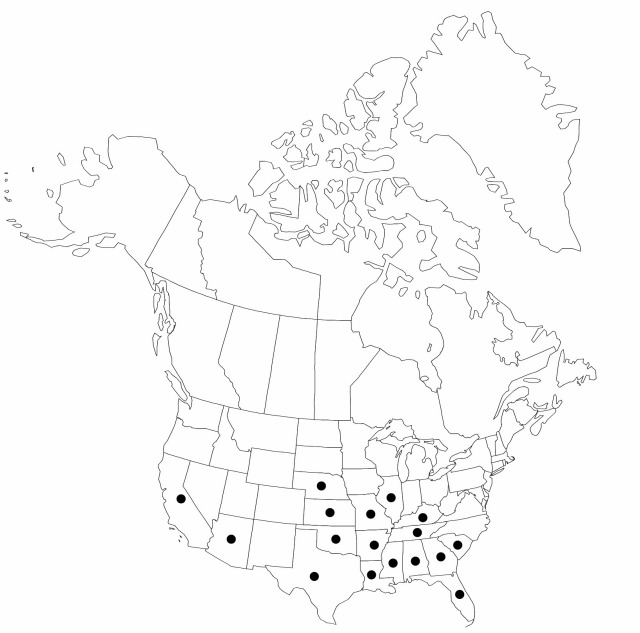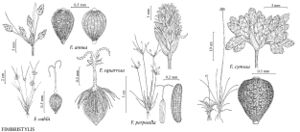Difference between revisions of "Fimbristylis vahlii"
Hort. Berol. 1: 287. 1827.
FNA>Volume Importer |
FNA>Volume Importer |
Revision as of 19:07, 24 September 2019
Plants annual, cespitose, delicate, 4–15 cm, bases soft; rhizomes absent. Leaves polystichous, mostly spreading or excurved, often exceeding culms; sheaths entire, abaxially smooth or sparsely hirtellous; ligule absent; blades filiform, to 0.5 mm wide, somewhat involute, abaxially glabrous or ascending-strigillose. Inflorescences terminal; spikelets sessile or subsessile in single capitate leafy-involucrate cluster; scapes filiform; involucral bracts leafy, setaceous, greatly overtopping inflorescence. Spikelets greenish, cylindric to lanceoloid-cylindric, 5–10 mm; fertile scales narrowly ovate to lanceolate, 1–1.5 mm, acute, glabrous, midrib strong, excurrent as cusp. Flowers: stamens 1; styles 2-fid, slender, bulbous-based, smooth or papillate. Achenes pale, tumidly obovoid, 0.5–0.7 mm, cancellate, pits horizontally rectangular in 5–7 vertical rows per side. 2n = 20.
Phenology: Fruiting summer–fall.
Habitat: Moist to wet, alluvial or mineralized banks, shores, fluctuating pond and lake edges, often a “drawdown” plant around stock tanks and reservoirs
Elevation: 0–500 m
Distribution

Ala., Ariz., Ark., Calif., Fla., Ga., Ill., Kans., Ky., La., Miss., Mo., Nebr., Okla., S.C., Tenn., Tex., Mexico, Central America, South America.
Discussion
Selected References
None.
